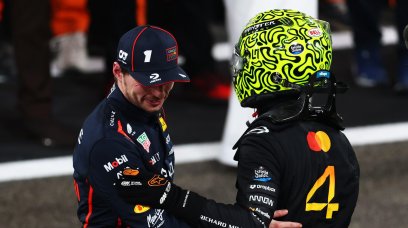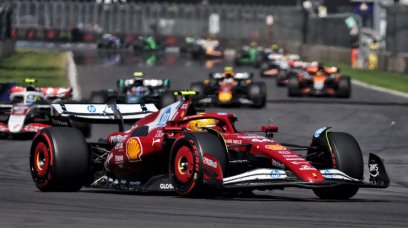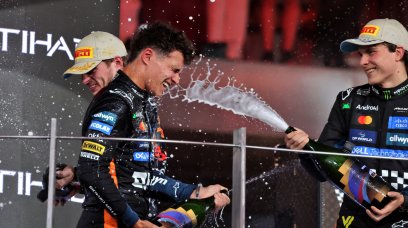Alpine's Marcin Budkowski says that the biggest challenge to start 2021 has been recouping the lost downforce after the FIA introduced technical changes to reduce rear downforce on the cars. The simplification of the floor and rear diffuser areas on the cars has meant the teams have had to work hard to claw back the deficit, with varying levels of success across the field. "We, as every team, lost a chunk compared to last year due to the changes on the back of the car," Budkowski admitted in an interview with RacingNews365.com. "Everybody's been quite busy recovering it, and we can't tell yet where we've ended up exactly. But everybody looks at recovering all of it, or most of it. "We lost over a second a lap to start with, and then obviously, recovering and recovering and recovering." The biggest issue has been taking the knock-on effects into account, with other areas of the car potentially affected as the teams make aero changes to generate that lost downforce. "It's a challenging area because, when you touch an area like the rear corner, you get into correlation issues, usually between the CFD, the tunnel, and the track", said Budkowski. "I don't think it was intentional from the FIA to pose that extra challenge. I think it was a slightly unintended effect but it's proved trickier than certainly we expected initially. "It's not just a piece of flow missing, it's actually quite a headache as well on top of it. Makes it interesting, I guess! "You can see there's different solutions and different costs. It's usually the case when you have a new regulation. So we've been doing some testing there, as a lot of other teams with good results, good direction, good understanding. "Obviously, correlation is challenging there, but that's no surprise. So we've not only gained some understanding, but we've improved the performance of the car in this area over the last few days, which is good news."
Looking to 2022
A major challenge for all the teams this year is the introduction of a budget cap to curb spending, as well as the looming introduction of completely new technical regulations in 2022. With Aerodynamic Testing Restrictions (ATR) also introduced this year with a 'sliding scale' of CFD and wind tunnel time allocated across the field, Budkowski admitted that 2021 represents a difficult balancing act. "I think there's two aspects here," Budkowski said. "[The] budget cap, that's the overall level of resources. So that's the size of your team and how many people you can deploy on this year's car and next year's car. "Then the other aspect is the fact that the aero resources are limited with the ATR. So we're mostly limited in our aerodynamic development. "But obviously, once you find that performance, you need to design and manufacture it. And this is where the overall size of the team, and therefore money, and therefore this is where the cost cap affects you. "But it's a tricky switch to get, because the change is so massive for next year that you have to do it early. Honestly, everybody's going to develop their car for a few races this year and switch, that's what we expect. "Whether someone's going to switch very early, and we already hear some voices from Haas that they will sacrifice the season in a different situation to us. Some people are going to develop later to have a better result this year, and risk 2022."
When will the crossover happen?
As the 2021 F1 season progresses, teams will have to scale back their 2021 development in order to focus on the new 2022 cars. The point at which this will happen will vary from team to team, depending on their own priorities. With the 2021 regulations coming at the end of a development cycle with limited returns, Budkowski believes that most teams will switch early due to much greater opportunity of big rewards at the start of the new regulation cycle. "It's still a green area if you want in terms of development," Budkowski explained. "So it's good bang for buck. "[With the '21 regulations] With a few runs of CFD and a few runs in a tunnel, you can find some performance. "Whether you still want to develop all the areas like the front wing or the barge boards that have been developed for years with stable regulations, that's going to start to be poor bang for buck compared to doing 2022 research, which is still very green and has a very, very steep development curve."
Most read







